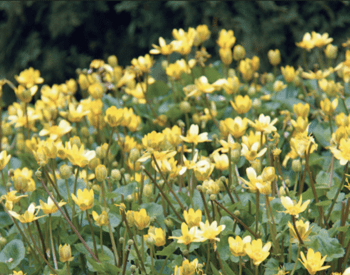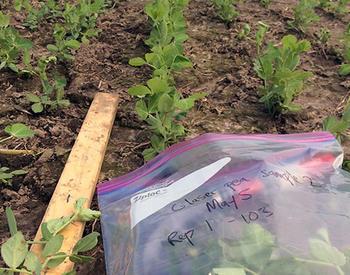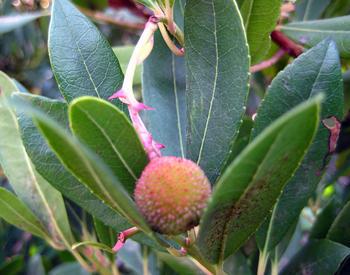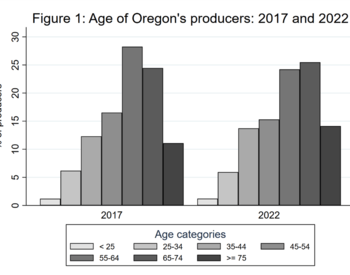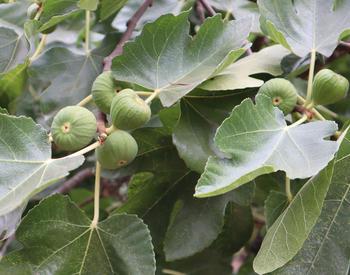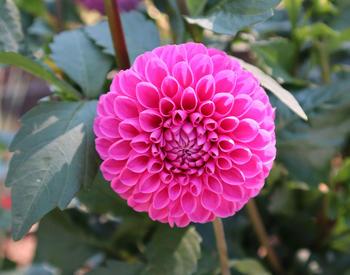After the flowers of summer fade, gardeners can look to a few favorite staples: fall mums, ornamental cabbages and kales, pansies every color of the rainbow, and beyond.
These tried-and-true ornamentals are some of the last to check out every garden season. Kales and pansies often persist into snow.
For those looking to expand late-season bloom options in their gardens, some lesser-known perennials are worthy of investigation. These can expand the variety of flower types, shapes and colors in the garden in fall — an aesthetic benefit to humans and a potential food source for pollinators. Several have the overall "daisy" shape that makes pollen access easier to a wide range of insects.
Five suggestions for attractive flowers to fill out the late-season bloom menu follow.
1. Helenium
The coneflower-lookalike flowers of this genus come in both annual and perennial types, in a wide range of colors perfect for fall — oranges, yellows, reds, burgundies and combinations.
These plants have been available for decades under the unfortunate name “sneezeweed,” making a prime opportunity for fall flower-arranging material sound like something no one would want. Recent efforts to improve this plant’s standing in home gardens reflect the genus name, rather than referencing the use of leaves in snuff mixtures.
Helenium is drought tolerant after establishment, another plus for Klamath gardeners. The plants are cold-hardy and resistant to deer feeding.
2. Geum
Geum is another flower with a common name and botanical genus, which are the same. Geum is a genus in the rose family. Like roses, these plants are seemingly easy to hybridize.
Numerous colors in both single and double form, smooth and ruffled petals, show up in a computer search of plant catalogs. The anemone-like flowers are showy and colorful.
Klamath gardeners should take care to choose cultivars wisely if a late-season bloom is the goal; not all Geum are late-season bloomers. Double types are fun to look at but are of less benefit to pollinators than the single-petaled varieties.
3. Anise hyssop
Anise hyssop is sometimes referred to as Agastache — the genus name for this group of mint family relatives. Anise hyssop will spread over time but is far less aggressive than true mints in the garden.
This perennial makes an excellent cut flower. The spiky forms of anise hyssop play nicely with the rounded shapes of Helenium and Geum in a bouquet.
Anise hyssop has the added benefit of a light, pleasing fragrance akin to a floral-herbal tea — in fact, the leaves are sometimes used in teas.
4. New England asters
These perennial bursts of tiny daisies are prone to lodging (falling over) in the western part of the state, where fall is often overcast or rainy.
Klamath gardeners enjoy much more fall sunshine, so the long, heavy, flower-laden stems of Aster novi-belgii stand up straighter and taller.
Most commonly, nickel- to quarter-sized blooms of white, pink, hot pink, purple or lavender form in clusters all along the stems. These asters are especially cold-hardy.
5. Salvias
Salvias are a genus of both annuals (such as the red-blooming Salvia splendens) and perennial garden plants. Of particular note here are the later season bloomers like Mexican bush sage, Salvia leucantha.
Mexican bush sage appears to have white and purple flowers. The flowers are white, emerging from purple specialized leaves called bracts.
Like Geum, some Salvia types bloom earlier in the season. Most Salvia blooms are in the blue to purple range, but yellow-, red- and white-flowering cultivars also exist.
An independent garden center that grows some of its own perennials can be an excellent source for some of the unusual Salvia types.
Some Salvias provide food for hummingbirds, butterflies and other pollinators, and some last well as cut flowers.
Power to the pollinators
For gardeners who want to support pollinators and other wildlife in the garden, having something blooming for as much of the gardening season as possible is an important strategy.
Late-season bloom can be challenging to achieve with flowers that bloom early and have spent their energy for the season. Late-season bloomers often bloom late summer, then steadily until a hard, killing frost.
These flowers supplement our native rabbitbrushes as the last flowers standing. They provide pollen for the season's final pollinators to provision their nests.

